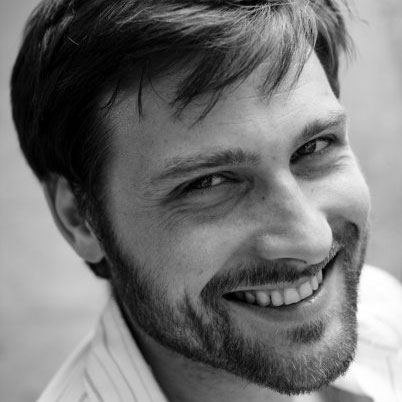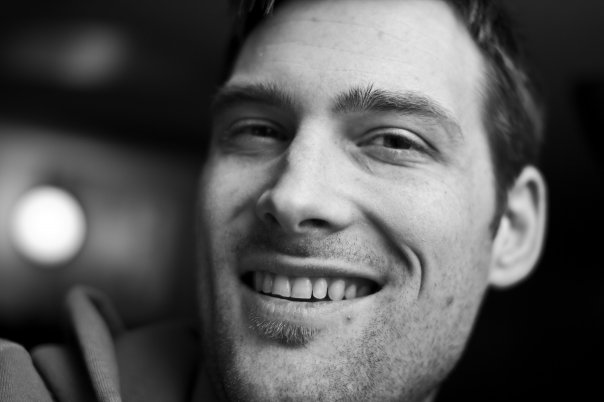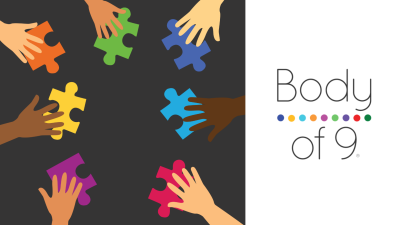Drew’s Story
Natural Number 1

It was the beginning of Burning Man, an annual festival held in the Mojave desert, and Drew Thompson had a goal. Though he’d been to the festival before, he’d had yet to engage with the more spiritual community and experience what it had to offer. With plenty of time ahead to explore this aspect of the Burn, he wasn’t expecting to find what he was looking for on the first day. Yet, that was exactly how he discovered Body of 9.
Heading through the crowds, lights, and sounds of camp center, Drew heard Susan Fisher addressing a group; the way she spoke and carried herself immediately caught his attention, and he wasn’t the only one. The people gathered around her seemed captivated and openly emotional. Drew observed as Susan invited a woman to join her, and instructed her to take certain stances and postures. Susan pushed on her shoulders, hips, or outstretched hands. Finally, Susan began to tell the woman what she had learned about her through her body. As she listened, the woman began to gush with tears. The audience, Drew included, was amazed; he didn’t know the woman, but she’d clearly been moved by what Susan had told her.
Susan began to explain more about the work then, and her personal experiences within it. She was honest and vulnerable; she didn’t proclaim to be “fixed” while everyone else was still broken. She was focused on the community as a whole, acting as a facilitator rather than an authority. The wisdom of her approach convinced Drew that he wanted to learn more, and that Body of 9 might be the perfect place to start his exploration of the spiritual side of Burning Man.
After the presentation in center camp ended, Drew checked the directory for their location, and headed to their tent. By the time he arrived, there was already a massive line outside, and the end of the day was nearing. As he took his place among the group, Drew knew he might need to return another time, but was called in just under the wire, one of last people for the evening. There was a large group already inside the tent, all waiting, listening, and watching as each participant was identified. Finally, it was his turn.
Susan began pushing on him, and finally settled on a posture that emphasized soft, sustained eye contact. After holding the connection for a long moment, Susan said he was a Natural Number 1. “And then she proceeded to tell me a whole bunch of things about myself that she couldn’t have known,” Drew recalls. “It was so articulate, and true, and oddly specific.” She explained how he was sensitive, which helped him to connect with others, but could be difficult for a man in the modern world; she elaborated on how it may have made him a target for bullies as a child, especially if he’d shied away from competition and sports. She explained how he could see perfection and wonder in the world around him, and conversely how his inner critic constantly reminded him that he wasn’t perfect in turn. He was particularly struck when Susan explained how he could see the beauty in the people around him. As a special needs educator, this idea resonated deeply; it was the very nature of his job to see behind the layers of a person’s behaviors, disabilities, and traumas to reach the wonderful human inside, trying to express themselves.
Overcome with the emotion of being seen, Drew broke down into tears, and realized that he was now the woman he had witnessed on the stage earlier that day. Seeing how overwhelmed he was, Susan and Martin brought him to a group of other recently identified NN1s who were undergoing a similar experience. As everyone opened up to speak about their experiences, the similarities became clear. “We all kind of commiserated with each other, and we had all these random things in common,” Drew says. “It was kind of one of those, ‘don’t you just hate it when…?’” Looking around, he realized that the people in the circle were from all over the world, of different ages and genders and cultures and beliefs. Yet, somehow, they were all so alike, shared so many of the same stories, joys, and struggles. He felt that there was something real here, something uniting them across their perceived differences, and it touched him. The entire event was transformative, something Drew would remember and return many times down the road.
The following year, Drew’s best friend accompanied him to Burning Man, and after hearing about Body of 9, also went to Susan for identification. As it turned out, he was an NN1 as well. “Well of course!” Drew remembers thinking—they’d always been kindred spirits, people who knew they were going to be close friends since the first time they’d met. This added a shared language to their friendship; one could notice when the other was allowing their critical side to take over, and remind them to be patient when things weren’t perfect or meeting an unrealistically high expectation. “We kind of jokingly say, “I think we’re just being a 1 about this; I think we’re just 1-ing this right now—are we 1-ing this right now? Is this a legitimate criticism, or are we just 1-ing this really hard and we need to be more patient?” We kind of razz each other a little about that,” Drew explains.

Indeed, Drew feels that the greatest gift Susan gave him through identification was an awareness of his self-critical side that didn’t condemn its existence. The NN1 ability to see and envision perfection can create a vicious cycle in which they compare themselves to an unachievable expectation, then reflect critically on themselves for failing to meet it, then further demean themselves for being overly critical to begin with. As Drew puts it, “We’re upset about the fact that we’re upset.” To make matters worse, twice-exceptional individuals—people who are gifted and have learning disabilities (such as ADHD, like Drew himself)—often have a heightened capacity to imagine incredible projects, but can struggle more than others to execute their vision due to disorganization or distraction. Perfectionist tendencies can eviscerate self-esteem when their demands can’t be met. As a result, the ever-widening gap between imagination and reality feeds into the cycle of self-criticism, which itself becomes a source of source of insecurity.
However, an awareness of this painful spiral can be the key to stopping it, and Drew uses his personal experience to help his special needs students from falling into the same traps. He feels that Body of 9’s wisdom supplemented his understanding of the neurological explanation for such challenges, and gave him more tools to describe his lessons to those who needed to hear them. What he most hopes to reverberate into society is a request: “Can we just, first of all, stop being hard on ourselves, but also stop being hard on ourselves for being hard on ourselves?”
This is in part because Drew recognizes that the source of his self-criticism is also a part of his ability to see the good and beauty around him. Though beating up on himself certainly hasn’t helped his self-esteem, his high standards contribute to his sense of vision in all areas of his life, from career to relationships, and motivate him to reach his goals. The realization of his 1ness’s duality helped him come to peace with its function in his world—he compares it to being tall; in some circumstances, like playing basketball, it’s quite helpful. In others, such as squeezing into the limited leg space of an airplane seat, it’s anything but. Strengths and weaknesses can come from the same source.
Drew encourages people to approach the Body of 9 with an open mind; as a scientifically oriented individual, he maintains some personal skepticism about some of the work’s methodologies, and understands that others might share them. At the same time, Drew doesn’t believe that logic is mutually exclusive with intuition; he holds that there is a difference between “truth” and “Truth,” in which Truth is a constant that asks, “What can we learn from this?” He can set aside that which he can’t prove while still finding value in an idea, whether that be wisdom, a pattern, or a metaphor. “If you’re trying to say, ‘is it true/is it not true?’ then that’s not necessarily a line of thinking that’s going get you something out of it. If you think about ‘what is this going to gain for me?’ and you have that openness to the experience, you might be surprised what will happen.” If are open to learn more, download the free ‘Four Practices for Presence’ guide here and begin exploring the impact you can have on the world.



